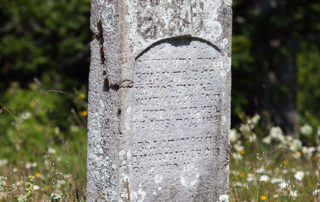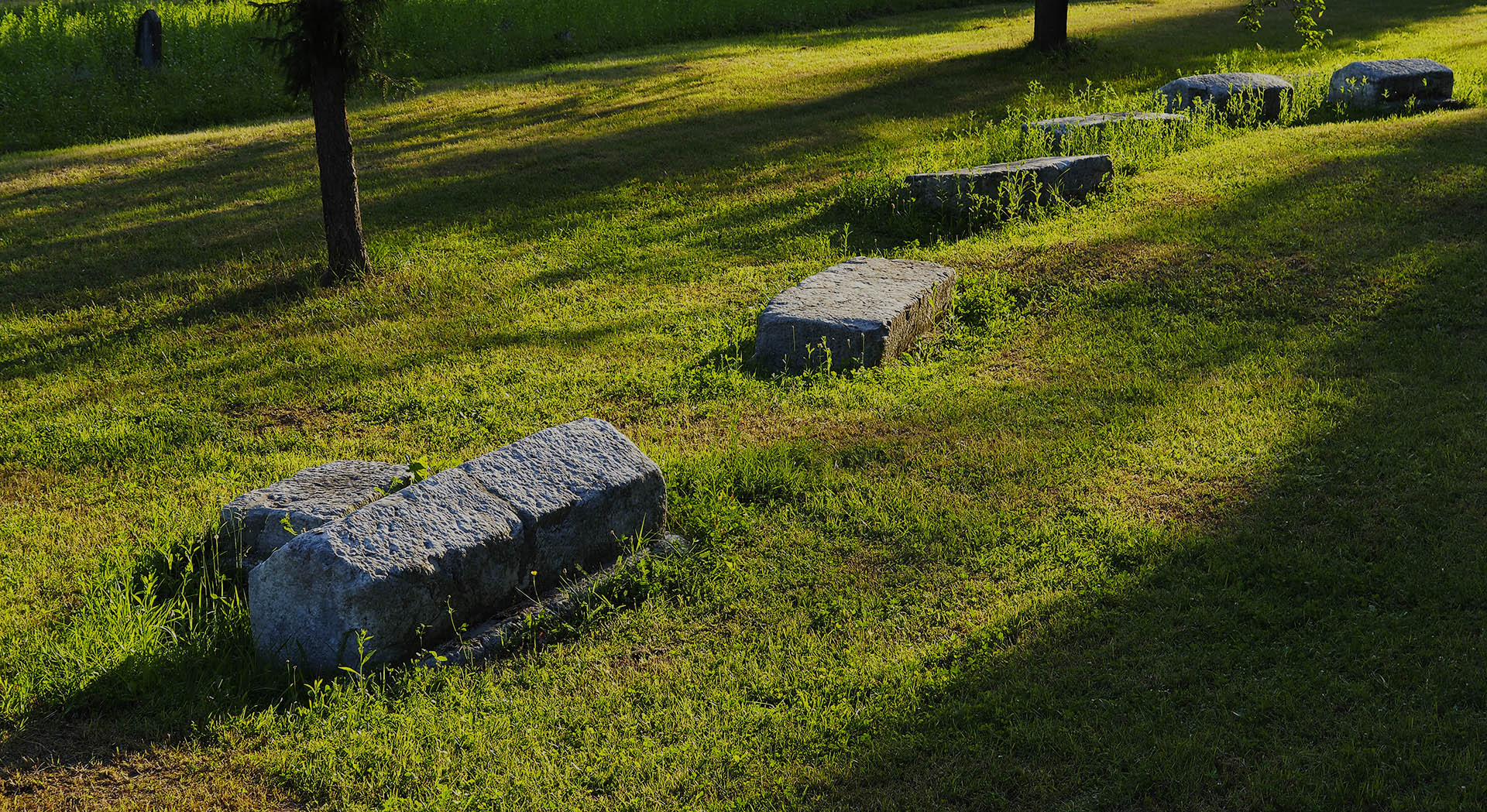MRAMORJE
Mramorje or Bagruša is one of the two localities on the territory of the municipality of Bajina Bašta that are on the UNESCO list of protected world cultural heritage. Mramorje is a medieval tomb necropolis, located in Perućac and one of the best-preserved necropolises in that region. It originates from the 14th century and stretches between the Drina River and the main road that follows its course, at the very entrance to the settlement. Another site with old tombs, which is on the UNESCO list, is located in Rastište on the slopes of Tara mountain. Mramorje in Perućac is also under the protection of the Republic of Serbia as a cultural monument of exceptional importance.
The necropolis was formed in the 14th century and had about 200 tombs, made of hard limestone, among which the largest specimens reached a length of 2 meters, with a width and height of almost 1 meter. Later sources record the number of 122 monuments, while, according to the latest data, there are 93 of them including:
WHAT ARE THESE TOMBS?
Tombs (stećci) are late medieval tombstones that appear as a special expression of sacred art in the wider area of the Balkans, in the territory of Bosnia and Herzegovina, Western Serbia, Northern Montenegro, Croatia and Dalmatia. Appearing as a work of art, as a sculpture, with the aim of creating an eternal monument to the deceased, as a common component of European funeral customs, the medieval tomb – tombstone is a special phenomenon and a specific synthesis of language and writing, religion and customs, history and chronology, culture, art and aesthetics.
Tombs as a monumental heritage of universal value belong to a unique cultural pattern,and Bajina Bašta is the municipality with the largest number of necropolises with these tombs in Serbia.. In addition to the historical context of their origin and influence on both the secular and spiritual life of the population that lived with the stećci for centuries, their protection, promotion and tourism valorization is also important.
PHOTO GALLERY
THESE TOMBS ARE ON THE UNESCO LIST
CULTURAL MONUMENT
Over time, part of the tombs was moved, part sank into the ground, while a few specimens were transferred to museums.












